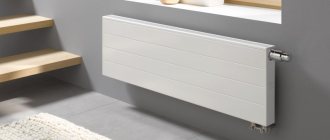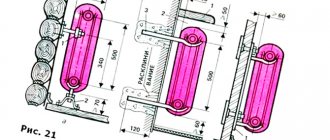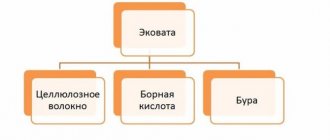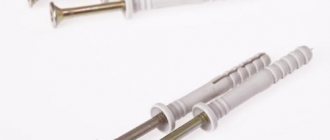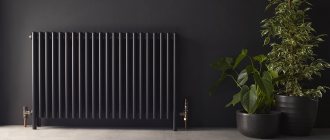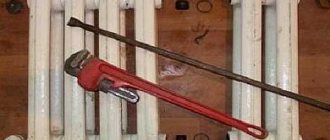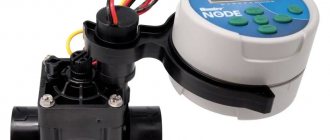Types of radiators
- Aluminum radiators are lightweight, durable, reliable and aesthetic heating devices. The aluminum radiator design has a well-developed surface. Coupled with excellent thermal conductivity, aluminum radiators are highly efficient and release 50% of the heat through radiation, and the other 50% through convection
- Bimetallic radiators are devices of double design and double advantages. These strong and durable devices successfully combine the advantages of aluminum and steel radiators, thus opening up new aspects of high-quality heating. Bimetallic radiators take high thermal conductivity and the ability to withstand high pressure from aluminum radiators, and strength and corrosion resistance from steel ones.
- Steel radiators are intended mainly for individual heating systems; they are characterized by low inertia and simplicity of design. Radiators of this type are made of two steel plates 1.25 mm thick, in which recesses are stamped, forming collectors and connecting channels. The advantage of this radiator is its immediate response to media temperature, i.e. rapid heating and cooling, which leads to maximum efficiency, especially when using modern thermostatic equipment such as thermostatic valves and thermal heads.
- Cast iron radiators are presented on the Russian market not only as Soviet classics. In modern design, they are the basis of the heating infrastructure of many countries. They are characterized by significant resistance to corrosion of materials, high pressure and various impurities.
Selection rules
Heating radiator appliances are by no means cheap, and are purchased for more than one heating season. Therefore, the choice of heating model should be approached with all responsibility. The first step is to calculate the required heat transfer for your apartment. We'll look at how to do this below. Next, you will need to select the directly appropriate type of heating device:
- Check out all the price segments presented in the store. Immediately discard the most expensive and cheapest options. The most inexpensive heating devices may turn out to be of low quality, but you shouldn’t overpay just for a brand name.
- Select the appropriate modification based on the material of manufacture. The durability of use depends on this, but the properties of the metal also affect the price.
- For multi-apartment buildings with centralized heat supply, it is better to select models with a nominal design pressure of at least 12 atmospheres. For private houses with an autonomous boiler, this indicator is not so relevant due to low pressure in the intra-house network.
- The optimal place to install a heating battery is under the windows. This creates a thermal curtain for the flow of cooled air into the room. Therefore, before purchasing, you should measure the height of the window sills so that the purchased radiator can fit under the window.
When choosing a suitable radiator device, first of all, pay attention to the quality of the product, and only then to its aesthetic properties. Please read the technical instructions carefully before determining whether this model is suitable for you.
Mayevsky tap on an aluminum radiator
When purchasing heating equipment, you must immediately purchase all the necessary components: fastening devices, Mayevsky valves for bleeding air, damper safety valves. A complete list of additional parts required for each specific modification can be obtained from your sales consultant.
Calculation of thermal power and number of radiators
Having decided on the type of radiator, you need to pay attention to the thermal power, the value of which depends on the specific room.
The amount of power consumed depends on a number of indicators:
- Room size;
- The number of external walls of the room and windows;
- Type of house (brick, panel);
- Window type (wooden, plastic).
Calculation of heat transfer is given for a room with a standard ceiling height of up to 3 meters and window sizes of up to 1.5 by 1.8 m.
In general, for ease of calculation, if the room is well insulated, you can take one radiator section per 1.5-2 square meters. m. area of the room.
Thermal power for all types of radiators is different:
- Cast iron radiator
- 80–150 W (for one section); - Steel radiator
- 450-5700 W (for the entire radiator); - Aluminum radiator
- 190 W (for one section); - Bimetallic radiator
- 200 W (for one section).
The power of the radiator, sectional or solid, is indicated in the technical specifications provided by the manufacturer. The optimal temperature of the coolant, water, under such conditions should be 70°C.
Calculation of heat transfer for an apartment
To roughly determine the required heat transfer for a home, you will need to make a simple calculation. We take the total area of all rooms and multiply it by 100 watts - the average heat loss coefficient of a house at a temperature of minus 30°C. For northern regions, this coefficient should be increased in proportion to the minimum winter temperature. As a result, we obtain the required minimum heat transfer from heating devices for winter. Heating engineers use more complex calculations that provide accurate estimates of a building's heat loss. But for installing heating batteries, an approximate calculation will do.
Determine the required dimensions
When buying a radiator, you need to know exactly the following points:
- What type of eyeliner do you have - hidden or open?
- How are the pipes connected to the radiator, from the floor, from the wall, from above, from the side, etc.;
- Diameter of heating pipes;
- Distance between pipes (center distance).
We also provide for placing the radiator in such a way that air can flow freely around it - otherwise the room will not receive 10 to 15% of heat.
The standards for placing radiators are as follows:
- The radiator distance from the floor is from 7 to 10 cm;
- distance from the wall – from 3 to 5 cm;
- distance from the window sill – from 10 to 15 cm.
Rules for the location of batteries in the house
In order for the system to work properly, installation rules must be strictly followed. Although the installation technology is not complicated, it has its own nuances, so the work must be carried out by specialists.
Important! If radiators are installed incorrectly, they are not covered by the warranty.
In order to avoid heat loss and uneven heating of the room, when installing devices it is necessary to observe indentations and choose the correct location:
- The most suitable option for the battery is considered to be a place under the window, i.e. where the heat loss is the most significant. The radiator width must be at least 70% of the window width. Mounted clearly in the middle.
- Leave at least 10 cm from the battery to the windowsill, as well as to the floor. The optimal distance between the floor and the radiator is 12 cm. It is not recommended to leave more than 15 cm.
- The battery is fixed at a distance of 5 cm from the wall.
- You can stick heat-reflecting material behind the radiator - then some of the heat will not go into the wall, but will return to the room.
- If the radiator is planned to be placed not under the window sill, but on the wall, then the distance between them should be at least 20 mm.
Which radiators are more reliable and durable?
We will again provide in the form of a list the duration of uninterrupted operation guaranteed by the manufacturers.
- Cast iron radiators – more than 50 years.
- Aluminum radiators - from 15 to 20 years (provided that the pH of the water is not higher than 7-8).
- Steel radiators – up to 15-25 years
- Bimetallic radiators - up to 20-25 years.
- Convectors – 10-25 years.
So, if, when figuring out which heating radiator to choose, you set durability as the main criterion, then you don’t have to look far. Take cast iron - not a single newfangled radiator will last longer. Only choose a proven manufacturer who makes really high-quality batteries using excellent raw materials and components. Following this are bimetallic and steel radiators.
As for reliability, there are two aspects here - the ability to withstand pressure and how demanding a particular type of radiator is on the coolant. If we talk about pressure, then the undisputed leader will be bimetallic radiators, followed by aluminum, cast iron and steel radiators.
But radiators treat coolant differently. The most durable in this regard are cast iron radiators, followed by bimetallic ones. For steel radiators, it is important that water is not drained from the system for a long period, otherwise corrosion may occur when oxygen enters the system. Well, the most “delicate” are aluminum radiators, which require Ph in the range of 7 - 8 units.
Features of an autonomous heating system
Installation of an autonomous heating system (AHS) for private housing construction allows you to take advantage of many of its advantages compared to a centralized analogue, despite some disadvantages.
Heating radiators for a private house.
Advantages
- One water heating boiler can provide a house with radiator heating, heated floors, and supply hot water to the kitchen and bathroom.
- The heating works fully regardless of seasonal shutdowns of the central heating system. This allows you to maintain a comfortable microclimate in the house during a sharp drop in temperature in the off-season.
- Closed heating and hot water supply circuits allow the use of clean coolant without harmful impurities. To do this, coarse and fine water filters are installed in heating systems.
- The owner of the house himself draws up a schedule and carries out repair and maintenance work to maintain the heating system of the house.
- An autonomous heating system is the only alternative to central heating for country cottages, large mansions and dachas.
- During the absence of the owners of a private house, you can set the operating mode of the heating system to the minimum heating temperature of a private house, which will save heating costs.
- The owner of the house can independently choose the class, type of heating radiators and determine their quantity.
- There is no threat of water hammer.
- Possibility of connecting to the Smart Home system.
Flaws
With all the advantages, autonomous heating has a number of disadvantages:
- you need to spend time and money on arranging the heating system, and apartment owners receive a ready-made heating system;
- maintenance and repair of ASO are the direct responsibility and concern of the homeowners, and in an apartment building this “lies on the shoulders” of the service company;
- You need to constantly monitor and regulate the temperature.
Appearance and finishing
Cast iron radiators are models from domestic manufacturers, although they have become smaller in size and have undergone changes in design (their façade has become flat), but they cannot boast of finishing. They are coated only with an anti-corrosion primer, which requires subsequent painting. But the models from European manufacturers and the coating are beautiful and durable, and the design is quite modern.
Separately, it is worth mentioning retro-style radiators; they are expensive, but their appearance is simply delightful.
Aluminum radiators are distinguished by a variety of designs. Many manufacturers produce multi-colored radiators that look very elegant and attractive. Models of aluminum radiators are distinguished by a wide range of center distances and standard sizes. This allows them to fit perfectly into any corner of the house.
Steel panel-type radiators can fit into almost any apartment interior. Smooth panels are not very noticeable, blending harmoniously with the surroundings. And tubular steel radiators are often distinguished by their unconventional shape. For example, they can be angular or made in the form of a trapezoid. They are also used to protect staircase steps and fit into niches and attic spaces. And everywhere such radiators look fresh and modern, shining with multi-colored paints.
Bimetallic radiators are very sophisticated in design. There are many models that have curved rather than straight surfaces. This allows them to fit perfectly into rooms with smooth angles.
Price categories
- Cast iron radiators (except for retro models) - from 300 rubles per section.
- Cast iron “retro” radiators - from 2000 rubles per section.
- Aluminum radiators - from 300 rubles per section.
- Steel radiators (price for a whole radiator) - from 1,500 to 10,000 rubles.
- Bimetallic radiators - from 500-600 rubles per section.
The cheapest radiators are steel panel and cast iron, especially those made domestically. After them will come aluminum injection molded radiators; extrusion models will be slightly cheaper. But the most expensive ones will be bimetallic radiators, retro-style cast iron radiators and steel tubular radiator models.



